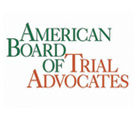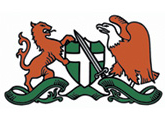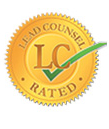Rollover accidents are among the deadliest accidents. When these accidents happen, the consequences are often fatal. In California, rollover accidents account for the highest fatality rates. Every year, thousands of people die in rollover accidents. A rollover accident occurs when a vehicle turns over on its roof or side. Many people blame rollover accidents on the changing composition of vehicles. Rollover accidents have increased with the proliferation of lightweight trucks and sport utility vehicles. If you or your loved one suffers injuries in a rollover accident, Los Angeles Car Accident Attorney can help you seek compensation.
Tripped and Untripped Rollover Accident
Rollover vehicle accidents mainly fall under two categories; tripped and untripped. Tripped accidents occur when a vehicle encounters an external object; the accident occurs due to external forces. For instance, a tripped rollover accident might occur when a vehicle collides with another vehicle or hits an object like a curb.
Untripped rollover accidents do not involve other vehicles or external objects. Instead, the accidents occur due to excessive friction with the ground, speed, and steering input. When cornering forces make a vehicle unstable, a rollover accident might occur.
The majority of tripped rollover accidents occur when a vehicle's tires dig into soft ground or strike a curb, especially when a vehicle slides sideways. This leads to a sudden surge in lateral force. A collision makes a vehicle unstable. When a vehicle strikes a turned down guardrail, one side of the vehicle accelerates upwards, leading to an accident. A side impact on a vehicle could accelerate the vehicle sideways; as the tires attempt to resist this acceleration, the vehicle ends up rotating and rolling.
Causes of Rollover Accidents
Several factors could lead to a rollover accident. It is important to determine the accident's exact cause to help you identify the party at fault. After you identify what caused a rollover accident, you can seek the compensation you deserve.
A rollover accident could occur due to roadway defects. For instance, if you swerve your vehicle to avoid a defect on the roadway, your vehicle might flip and crash. A rollover accident could also occur if you strike a pothole, especially while driving at high speed. If a rollover accident occurs due to defective road conditions, the government entity responsible for maintaining the roadways might be liable for the accident.
A rollover accident could also occur due to a vehicle defect. Vehicles with certain designs have a high tendency of rolling over; for instance, most rollover accidents involve SUVs. An accident could also occur if a vehicle has defective parts like tires. If a tire blows out while you are driving, your vehicle might flip and rollover.
Other drivers could also cause a rollover accident. For instance, if another driver swerves into your lane, he/she might force you to jerk on the wheel. When you overreact to avoid an accident, your vehicle might flip and roll over, leading to an accident.
A rollover accident might also occur if you happen to lose control of your vehicle. You could lose control of your vehicle if you fall asleep while behind the wheel or due to distracted driving. If you are not paying attention while driving, you might strike a curb or other obstructions. The impact of striking an object might throw your vehicle off its center of gravity and roll over on its top. Multi-vehicle crashes could also cause rollover accidents. For instance, if a vehicle hits the side of your vehicle, it may push your vehicle over and make it roll.
An accident might occur when a vehicle crosses a slope or a ditch, especially when it moves at high speed. Most rollover accidents occur at critical slopes; these slopes cause numerous vehicles to overturn. A vehicle might also rollover when maneuvering an uneven terrain.
When another driver is to blame for the rollover accident, you could file a personal injury claim against the driver. If an accident involves an on-duty driver as the party at fault, you would have to file a lawsuit against the driver’s employer. For instance, if an on-duty truck driver is to blame for an accident, the trucking company could be vicariously responsible for your damages. When you hold a company accountable and not a driver, you will have a higher chance of getting higher compensation. Generally, companies have insurance that is more comprehensive and higher coverage limits than individual drivers. You will need an experienced attorney to help you identify the party at fault.
Typically, rollover accidents involve one vehicle; the vehicle loses control, mainly due to poor road conditions and ends up flipping and crashing. Rollover accidents are common during the winter season due to snowy and icy road conditions. Other road conditions that could lead to rollover accidents include uneven ground and soft road shoulders. An accident might occur if you collide with guardrails and curbs when your vehicle loses traction. Your vehicle might flip and rollover if you hit an obstacle while driving.
In the case of a vehicle occupant's ejection during a rollover accident, the injuries are often catastrophic. The injuries will be even worse if a vehicle's roof collapses after a rollover accident. The U.S Federal government ordered an improvement of vehicles' structure to ensure that vehicles are more resistant during accidents. However, some vehicle manufacturers have not embraced these minimum standards.
The Impact of a Rollover Accident
After a rollover accident, your vehicle might end up lying on its side or upside down on its roof. Often, a vehicle ends up blocking its doors, making it hard for vehicle occupants to exit the vehicle after an accident. Larger passenger vehicles have more openings than small vehicles; it is easier to exit larger vehicles like buses and trams after a rollover accident. Larger vehicles have special windows equipped with handles; vehicle occupants can use the windows as emergency exits. However, this is not the case in a regular or smaller vehicle; you might remain trapped in the vehicle for a long time after a rollover accident.
Compared to other accidents like frontal, rear, and side accidents, rollover accidents have the worst consequences. Rollover accidents are extremely deadly for vehicle occupants. When an accident occurs, the roof is likely to roll over and collapse towards the vehicle occupants causing extreme head injuries. A rollover accident would have worse consequences if it involved a convertible. Apart from the windshield frame, convertibles do not offer additional safety features. In case of a rollover accident, the occupants of a convertible would roll out of the vehicle.
Suing After a Rollover Accident
If you feel that a rollover accident occurred due to the negligence of another party other than you, it would be ideal to sue and seek compensation. For instance, it would be advisable to file a personal injury claim if:
-
The accident occurred due to poorly maintained roadways characterized by sinkholes, potholes, and other hazards.
-
There was poorly marked construction or if the contractors left the road in poor condition.
-
The accident occurred due to defective tires.
-
You had not received ample warning regarding tire or vehicle defects.
-
The vehicle did not have adequate roll cages and roll bars to prevent your roof from collapsing after a rollover accident
-
The vehicle's airbags did not deploy after the accident due to a manufacturing defect, which made you suffer extensive damage.
-
The accident occurred due to another driver’s negligence. For instance, the other driver might have caused the accident while engaging in distracted or reckless driving.
Rollover Accidents Due to Vehicle Defects
When a rollover accident occurs due to a vehicle defect, you could sue the vehicle manufacturer. Sometimes, different issues could have led to the rollover accident; your attorney will have to evaluate the different factors to be able to apportion fault. Several defects could lead to a rollover accident. Some of the common defects that could lead to a rollover accident include:
Issues with the Electrical System
Several problems might occur when a vehicle's electrical system malfunctions. It might be hard to control the vehicle; the vehicle might not respond to certain signals. When the electrical system fails, the vehicle's signals might not respond to crucial parts like the steering wheel and the braking system. Some electrical issues might be internal and not visible to the driver. When a rollover accident occurs, it might not be apparent that an electrical system issue caused the accident. Your car accident attorney might order an investigation to determine the exact cause of the vehicle accident.
Failure of the Braking System
A rollover accident might occur due to the failure of the braking system. You can tell that the braking system has an issue if you can't get the vehicle to stop moving. If you are behind the wheel and yet you cannot stop the vehicle, a rollover accident might occur. Rollover accidents occurring due to the failure of the braking system are usually catastrophic. The accident often leads to severe collisions, vehicle damage, and physical injuries.
Issues with the Steering Wheel
Most issues involving the steering wheels occur when the steering wheel locks and makes a driver unable to control the vehicle. This could make a driver hit other vehicles or objects and make the vehicle to tip over and roll.
Common Injuries in a Rollover Accident
Even if rollover accidents are not common compared to other types of accidents, their impacts can be catastrophic. Even if rollover accidents only account for a small percentage of vehicle accidents in California, they have the highest fatality level. Due to the many factors that contribute to rollover accidents, accidents tend to be violent. The extent of injuries suffered by victims of a rollover accident depends on several factors, including environmental conditions, the driver's skills, and the vehicle type.
Some of the typical injuries that you are likely to suffer after rollover accidents include:
Traumatic Brain Injuries
You might suffer head and traumatic brain injuries in a rollover accident. These injuries are likely to occur if you are not wearing a seat belt at the time of the accident. Other common head injuries include lacerations and cuts on the head, skull fracture, and brain injuries. Head and brain injuries could have long-lasting impacts on your life.
Traumatic brain injuries could also occur if a vehicle occupant is ejected from the vehicle and strikes his/her head on the window or any other part of the vehicle. The victim might also strike his/her head on the tarmac after ejection from the vehicle.
The impact of the accident might jolt the brain within the skull leading to traumatic brain injuries. The symptoms of traumatic brain injuries might disappear after some time; however, you might experience severe impacts later in life.
Injuries on the Neck
You could also sustain injuries on the neck after a rollover accident. Common neck injuries that you are likely to experience include herniated discs, slipped discs, whiplash, and nerve damage. Neck injuries mainly occur when the roof of a vehicle cave in or buckles during a rollover accident. This could lead to extreme injuries, including injuries on the neck and limbs.
Spinal Cord Injuries
You might also suffer spinal cord injuries after a rollover accident. The tremendous/extreme forces involved in a rollover accident could exert excessive pressure on your back, leading to spinal injuries.
Spinal injuries are catastrophic and might result in paralysis of the pelvic, legs, torso, arms, and shoulders. You might also suffer injuries on the soft tissues and the discs on your back and neck. Such severe injuries might require surgery as the only effective form of treatment.
Broken Bones
You are also likely to suffer broken bones in a rollover vehicle accident. You could suffer fractures on your legs, arms, ankles, and other bones. Even if you are wearing a seatbelt at the time of the accident, you are likely to be twisted and tossed within the vehicle. This could lead to broken bones and fractures.
In the case of ejection during an accident, you might collide with the roadway or other objects, which could also lead to broken bones and fractures.
Soft Tissue Injuries and Lacerations
It is common for victims to suffer soft tissue injuries, including torn ligaments and tendons, and pulled muscles. You might experience deep lacerations from jagged metal and broken glass from the vehicle wreckage. The deep cuts resulting from the accident might result in permanent disfigurement and scarring.
Internal Injuries
A rollover accident might result in internal injuries. Even if the internal organs are tucked within the body, beneath the skin, a rollover accident might lead to internal injuries. Broken limbs might have an impact on the body leading to internal injuries and bleeding. Internal injuries could also occur due to penetrating injuries from vehicle parts. When the body collides with objects after ejection from the vehicle, internal injuries might occur.
How to Avoid Fault in a Rollover Accident
Taking various precautions can help you to avoid fault in case a rollover accident occurs. Even if rollover accidents might not be preventable, you could take some steps to reduce the likelihood of an accident. With the right precautions, you can avoid extensive injuries in case of a rollover accident. Some of the precautions that you can take are:
Wearing your Seat Belts at All Times
The chances of surviving a rollover accident are much higher when you are wearing a seat belt. Your chance of surviving a rollover accident will be much higher if you wear a seat belt at the time of the accident. You should not limit the wearing of seat belts to wrong trips. The majority of car accidents occur within a few miles of a victim's home. Therefore, even if you are only driving for a short distance, you should ensure that you are wearing a seat belt. If you are not wearing a seat belt at the time of the accident, the defendant might blame you for your injuries. The defendant might argue that if you were wearing a seatbelt at the rollover accident, you would have suffered less severe injuries.
Inspect your Vehicle Regularly
It is important to ensure that you always inspect your vehicle regularly. For instance, you should have your vehicle checked if you notice a problem with the tire, braking system, steering wheel, or any other vehicle part. Worn tires increase the risk of a tire blow out; if a tire blows out when you drive at high speed, you might lose control of the vehicle leading to a rollover accident. As a vehicle owner, you have the responsibility of maintaining your vehicle and repairing the damage. If your vehicle did not have a defect at the time you bought it, the vehicle manufacturer might deny liability in case of a rollover accident. The manufacturer might argue that the vehicle defect occurred due to poor vehicle maintenance and not due to manufacturer's negligence.
Avoid Speeding
The majority of rollover accidents in California involve speeding. While speeding, it is harder for you to control your vehicle, which could lead to an accident. Loss of control of your vehicle increases the likelihood of getting a rollover accident. If a rollover accident occurs, and it is evident that you were speeding at the time of the accident, you could be partly to blame for the accident.
Avoid Overloading your Vehicle
Overloading your vehicle could put excessive pressure on the tires, and this could affect the vehicle's balance and make the vehicle more susceptible to a rollover accident. Overloading increases the risk of a rollover accident, especially in taller vehicles like vans, trucks, and SUVs.
Be Careful while Driving on Unfamiliar Roads
You should be careful when operating your vehicle on unfamiliar roads to help avoid rollover accidents. Rollover accidents often occur on unfamiliar roads where drivers are likely to hit obstacles without suspecting it. You should be particularly careful while driving on roads that do not have a center divider and roads with higher allowed speed limits. Careful driving relieves you from liability in case of a rollover accident in California.
Proving Fault in a Rollover Accident
To get compensation after a rollover accident, you must prove that the defendant owed you a duty of care. For instance, a vehicle manufacturer owes consumers a duty of care and should ensure that he/she manufactures high-standard vehicles that do not pose a risk to vehicle occupants. In case of any risk, the law requires manufacturers to give sufficient warning to the consumers. The people responsible for maintaining the roadways owe a duty of care to drivers and other road users like pedestrians. If these entities fail to maintain the road as required, and an accident occurs, they could be liable under California law. Drivers owe a vehicle of care to other road users; if another vehicle hits your vehicle and causes it to roll, the vehicle driver might be to blame for the accident.
You have to prove that the defendant breached his or her duty of care by being negligent. The form of negligence will depend on the party responsible for the accident. For instance, another vehicle driver might be negligent for engaging in reckless or distracted driving and ending up hitting your vehicle. Entities responsible for maintaining the roadways might be negligent by leaving roads in poor conditions and posing a risk to drivers. Vehicle manufacturers would be negligent for releasing defective vehicles into the market and failing to issue adequate warnings to consumers.
Lastly, it should be evident that the defendant's breach of his/her duty of care led to your injuries.
Damages Available
You can claim several damages in a rollover accident. You can seek compensation for the medical expenses incurred in treating the injuries suffered in a rollover accident. You should seek compensation for both current and future medical costs.
You should also seek compensation for lost income, including lost wages and loss of earning capacity. You might not be able to continue working after sustaining injuries in a rollover accident.
You could also seek compensation for pain and suffering, loss of enjoyment of life, and emotional distress. Your spouse could seek compensation for the loss of consortium.
Find a Car Accident Attorney Near Me
After suffering injuries in a rollover accident, you need aggressive legal representation to ensure that you get the compensation you deserve. We at the Los Angeles Car Accident Attorney can guide you through the claim process and help you seek compensation. Contact us at 424-237-3600 and speak to one of our attorneys.






